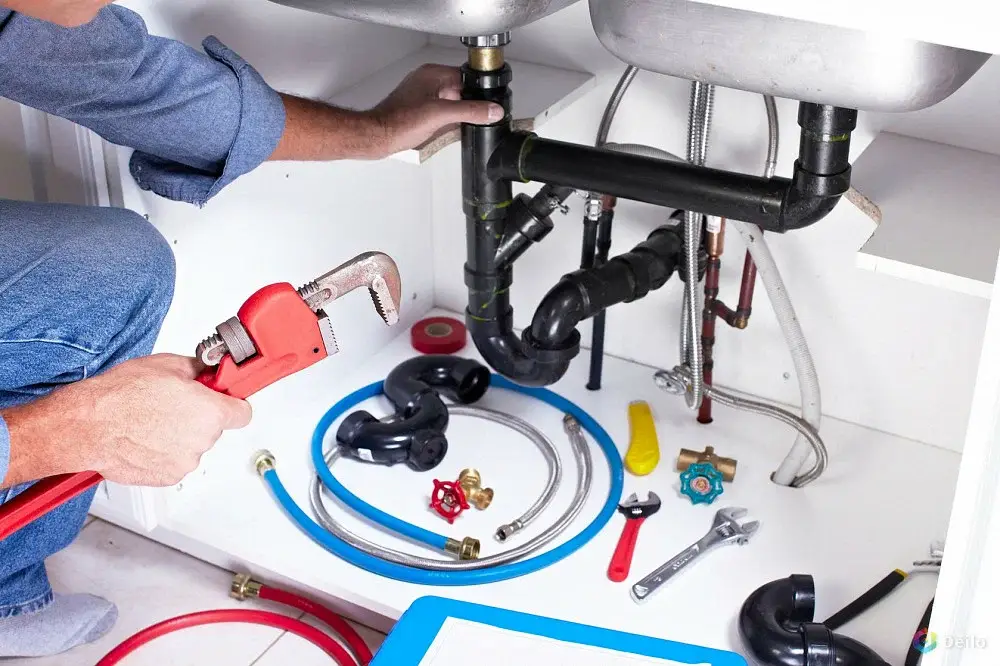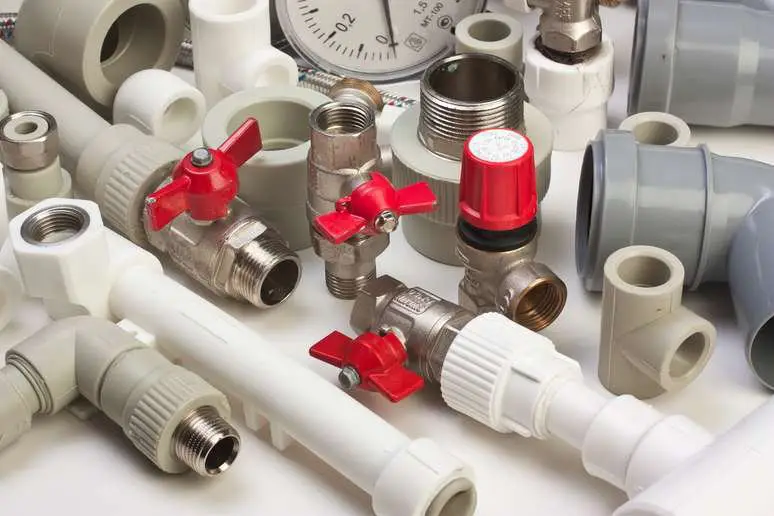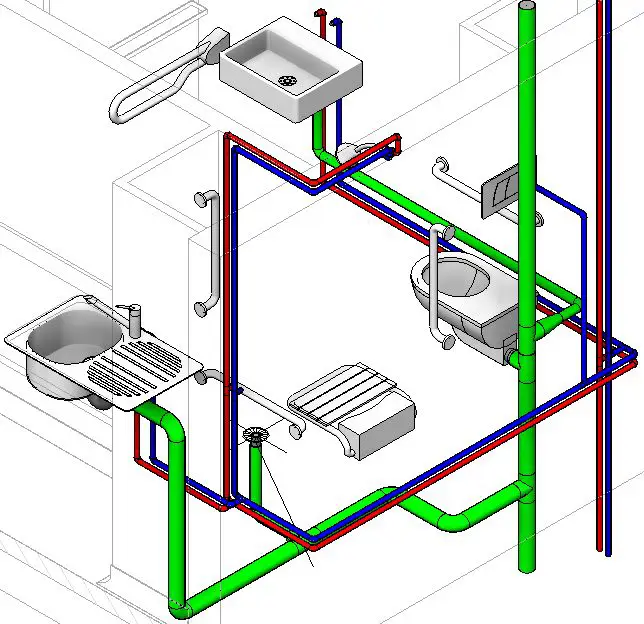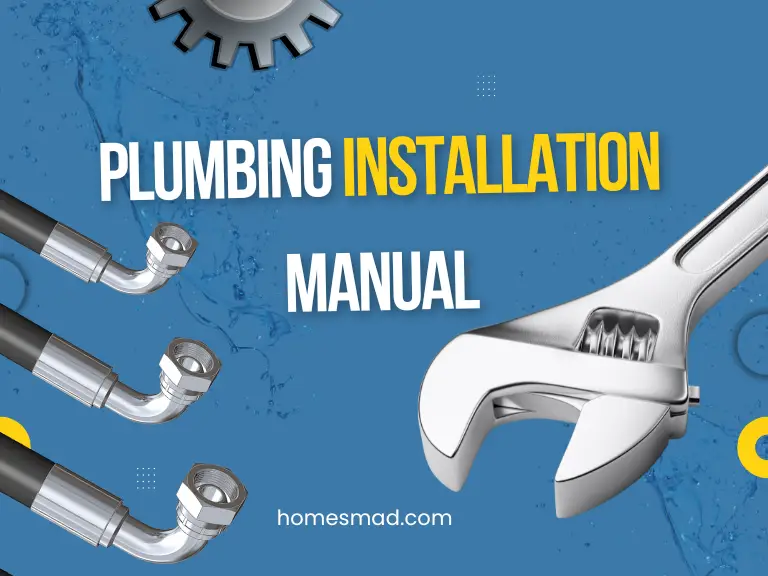When it comes to plumbing installation manual , understanding the nuts and bolts—or rather, the pipes and fixtures—of your home’s plumbing system can be a game changer. This article serves as a comprehensive guide, walking you through everything from essential components to step-by-step installation processes. Whether you’re a DIY enthusiast or a novice tackling a home renovation, this manual will equip you with the knowledge you need to navigate your plumbing project with confidence.
Introduction to Plumbing Installation
Overview of Plumbing Installation
Plumbing isn’t just about pipes; it’s a vital system that keeps our homes running smoothly. A well-installed plumbing system provides clean water for drinking, cooking, and bathing, while also ensuring that waste is efficiently disposed of. Understanding how this system works is crucial for any homeowner or aspiring DIYer.
Imagine your home without running water or functioning toilets. Yikes! That’s where plumbing comes into play. It’s not just functional; it enhances our daily lives and comforts. Whether you’re renovating an old bathroom or building a new home, knowing how to properly install plumbing fixtures and systems can save you time, money, and a whole lot of hassle.
Purpose of the Manual

This plumbing installation manual aims to demystify the complexities of plumbing. You’ll find practical tips, essential tools, and step-by-step instructions that can help you tackle any plumbing project, big or small. From understanding the various types of pipes to ensuring everything is up to code, we’ve got you covered.
As we delve deeper into the world of plumbing, you’ll not only learn the fundamentals but also pick up some expert tricks along the way. So, grab your tools, roll up your sleeves, and let’s get started on this plumbing journey! If you’re eager to learn about plumbing codes, check out this resource for more detailed information.
Essential Plumbing Components
Understanding the essential components of your plumbing system is crucial before you start any installation project. Each piece plays a significant role in ensuring your plumbing functions effectively. In this section, we’ll break down the various types of pipes, fixtures, and fittings you’ll need, along with their benefits and applications.
Types of Plumbing Pipes
The backbone of any plumbing system lies in its pipes. Choosing the right type is vital for both functionality and longevity.
PEX Pipes
PEX (cross-linked polyethylene) has gained immense popularity among DIYers and professionals alike. Why? For starters, it’s flexible, which makes installation a breeze, especially in tight spaces. Plus, it’s resistant to corrosion and scale buildup. However, it’s essential to keep it out of direct sunlight and away from UV rays, as prolonged exposure can weaken the material.
PVC Pipes
When you think of drainage systems, PVC (polyvinyl chloride) pipes are usually at the forefront. They are lightweight, easy to cut, and come in various sizes, making them perfect for a wide range of applications, from residential drainage to venting. The downside? They can’t handle high temperatures, so they’re not suitable for hot water lines.
Copper Pipes
Coppers pipes have been a staple in plumbing for decades, and for good reason. They are durable, resistant to bacteria, and can handle high temperatures, making them ideal for both hot and cold water lines. However, they can be a bit more expensive and require soldering skills for installation.
Plumbing Fixtures
Once you have your pipes sorted, it’s time to focus on the fixtures that will make your plumbing system functional.

Faucets and Sinks
Faucets and sinks are often the first fixtures we think about in a plumbing system. They come in countless styles and designs to fit any decor. Ensure you choose a faucet that matches the sink’s configuration (single-hole, centerset, or widespread) for a seamless fit.
Toilets
Toilets come in various styles and types, including two-piece, one-piece, and wall-mounted options. Each type has its own installation nuances. For instance, wall-mounted toilets save space but require additional framing, while one-piece toilets offer a sleek design that’s easier to clean.
Showers and Bathtubs
When it comes to bathrooms, showers and bathtubs are critical components. Whether you’re opting for a shower stall, a walk-in shower, or a classic bathtub, understanding the installation requirements and plumbing connections is key. Make sure to consider drainage slope and water supply connections to avoid future problems.
Valves and Fittings
Valves and fittings connect various parts of your plumbing system.
- Valves regulate the flow of water and can prevent backflow or leaks.
- Fittings, such as elbows, tees, and couplings, help direct the flow of water where it needs to go.
Selecting high-quality fittings ensures that your plumbing system operates efficiently and lasts longer.
In this section, we’ve covered the essential components of a plumbing system, highlighting the importance of choosing the right materials for your project. As you plan your installation, remember that understanding these components will set the foundation for a successful plumbing system. For more insights into plumbing systems, you can refer to Home Plumbing Basics.
Planning Your Plumbing System
Planning your plumbing system effectively can make all the difference between a smooth installation and a frustrating experience. Whether you’re renovating an existing space or designing a new one, knowing what to consider during the planning phase is crucial. This section will guide you through understanding local plumbing codes, designing your plumbing layout, and considerations specific to different types of homes.
Understanding Local Plumbing Codes
Before you dive into your project, it’s essential to familiarize yourself with local plumbing codes. These regulations ensure that plumbing installations are safe, efficient, and up to standard. Each municipality may have different codes, so check with your local building department or consult a professional plumber.
Why does this matter? Following codes not only helps in passing inspections but also protects your home from potential hazards like leaks and water contamination. For more detailed information on plumbing codes, refer to resources like Plumbing Codes and Regulations.
Designing Your Plumbing Layout
A well-thought-out plumbing layout is vital for efficient water flow and drainage. Here are some key components to consider:

Drainage Systems
When planning your drainage system, think about the layout of your fixtures. You want to ensure that all drains are pitched correctly to allow for gravity to do its job. Typically, a slope of 1/4 inch per foot is recommended for horizontal drainage lines. Additionally, placing fixtures close together can reduce the amount of piping needed, making the installation simpler and more cost-effective.
Water Supply Lines
For your water supply lines, ensure that they are sized correctly to meet the demands of your household. Generally, larger diameter pipes (like 3/4 inch) should be used for main lines, while smaller pipes (1/2 inch) can be used for fixtures. Remember to account for the distance the water has to travel; longer distances may require larger pipes to maintain adequate pressure.
Considerations for Different Home Types
The plumbing needs of a home can vary significantly based on its type and layout. Here are some considerations for different home types:
Single-family Homes
In single-family homes, the plumbing system is usually straightforward. You have the freedom to design your plumbing layout to fit your lifestyle, whether that’s open-concept living or segmented spaces. Make sure to include sufficient access points for maintenance, particularly for drains and water supply lines.
Multi-story Buildings
For multi-story buildings, plumbing becomes a bit more complex. You’ll need to ensure that vertical piping is installed correctly, allowing for proper drainage and water supply throughout all floors. Consider installing a wet venting system to allow multiple fixtures to share a single vent pipe, saving space and material costs.
Tiny Houses and Mobile Homes
Tiny houses and mobile homes often have unique plumbing challenges due to their compact size. Space-saving plumbing fixtures and innovative design solutions, such as corner sinks or compact toilets, can optimize your layout. Additionally, consider using flexible piping options, like PEX, that can bend around tight spaces without compromising flow.
Planning your plumbing system doesn’t have to be overwhelming. By understanding local codes, designing an efficient layout, and considering the unique aspects of your home, you’ll be well on your way to a successful installation. For further tips on home plumbing, check out the article on Home Plumbing Basics.
Step-by-Step Plumbing Installation Process
Now that you’ve laid the groundwork by understanding the components and planning your plumbing system, it’s time to roll up your sleeves and get to work! This section will guide you through the step-by-step plumbing installation process, from gathering your tools to installing fixtures.
Gathering Tools and Materials

Before diving in, it’s crucial to have the right tools and materials on hand. Here’s a quick checklist to ensure you’re prepared:
- Pipe Wrenches: For tightening and loosening fittings.
- Pipe Cutters: Essential for cutting pipes cleanly.
- Plumber’s Tape: Helps seal threaded connections to prevent leaks.
- Level: To ensure your fixtures and pipes are straight.
- Screwdrivers: Both flathead and Phillips for various fixtures.
- Hacksaw: Useful for cutting through tougher materials.
- Safety Gear: Don’t forget gloves and goggles!
Having everything organized before you start will make the process smoother and help you avoid unnecessary trips to the hardware store.
Installation of Water Supply Lines
With your tools ready, it’s time to install your water supply lines. Follow these steps:
- Measure and Cut: Measure the length needed for each supply line and cut your pipe accordingly. Use a pipe cutter for a clean cut.
- Deburr the Edges: After cutting, make sure to deburr the edges to prevent damage to fittings and ensure a good seal.
- Connect the Pipes: Use the appropriate fittings to connect the pipes. If using copper, you’ll need to solder the joints. For PEX, simply push the fitting into the pipe until it clicks into place.
- Secure the Lines: Fasten the pipes to the wall or floor using pipe straps or hangers, ensuring they’re level and securely anchored.
Drainage Installation
Now that your water supply lines are set, it’s time to focus on the drainage system. Here’s how to do it:
- Plan the Drainage Layout: Remember that all drainage pipes should slope downward toward the main drain. A slope of 1/4 inch per foot is recommended.
- Install the Drain Pipes: Cut the pipes to the desired lengths and connect them using the appropriate fittings, ensuring all connections are tight. Use plumber’s tape to seal threaded connections.
- Connect to the Main Drain: Make sure to connect your new drainage lines to the main drain, ensuring proper alignment and slope.
- Check for Leaks: After everything is connected, it’s wise to check for leaks before moving on. Turn on the water supply to test your connections.
Fixture Installation
With the plumbing lines in place, it’s time to install the fixtures. This is where your space really starts to take shape!
1- Installing Toilets
- Position the Wax Ring: Place a new wax ring on the toilet flange.
- Set the Toilet: Carefully lower the toilet onto the wax ring, ensuring the bolts fit through the holes.
- Secure the Toilet: Tighten the nuts onto the bolts, but be cautious not to overtighten, as this could crack the toilet.
- Connect the Water Supply: Attach the water supply line to the toilet tank and turn on the water.
2- Installing Faucets and Sinks
- Attach the Faucet: Before placing the sink, attach the faucet to the sink according to the manufacturer’s instructions.
- Position the Sink: Set the sink into the countertop or cabinet, ensuring it’s level.
- Connect the Drain: Install the drain assembly, ensuring everything is sealed properly with plumber’s putty.
- Connect Water Supply: Attach the water supply lines to the faucet.
3- Installing Showers and Bathtubs
- Set the Bathtub: If you’re installing a bathtub, position it according to your layout and level it.
- Connect Drain and Supply: Attach the drain and water supply lines. Make sure to seal connections tightly.
- Install Shower Fixtures: Follow the manufacturer’s instructions for installing showerheads and controls.
With all fixtures installed, double-check your work for leaks and ensure everything is functioning correctly. Proper installation today can save you time and money in repairs down the line.
This step-by-step guide has covered the essentials for installing your plumbing system. For further details on plumbing projects, check out Troubleshooting Common Plumbing Issues.
Common Plumbing Problems and Solutions

Even with careful planning and installation, plumbing issues can arise unexpectedly. Understanding these common problems and knowing how to address them can save you time, money, and frustration. In this section, we’ll explore several frequent plumbing issues and provide practical solutions to tackle them effectively.
Leaks
Types of Leaks
Leaks can occur in various parts of your plumbing system, including:
- Pipe Leaks: These are often caused by corrosion, high water pressure, or poor connections.
- Fixture Leaks: Faucets, toilets, and other fixtures may develop leaks due to worn-out washers or seals.
Solutions
- Pipe Leaks: If you discover a leak in a pipe, the first step is to turn off the water supply. For small leaks, you can use pipe tape or a pipe clamp as a temporary fix. For larger leaks or extensive damage, consider replacing the affected section of pipe.
- Fixture Leaks: To fix a leaky faucet, disassemble the faucet, replace worn washers or O-rings, and reassemble it. For toilets, check the flapper valve and replace it if necessary to prevent continuous running.
Clogs
Types of Clogs
Clogs can occur in sinks, showers, toilets, and drains, often caused by:
- Hair: A common culprit in bathroom drains.
- Food Waste: Often blocks kitchen sinks if not properly disposed of.
- Soap Scum: Can build up over time, especially in showers.
Solutions
- Simple Clogs: Use a plunger to dislodge minor clogs in sinks or toilets. If this doesn’t work, a plumbing snake can help reach deeper blockages.
- Severe Clogs: For more stubborn clogs, consider a mixture of baking soda and vinegar, followed by hot water, to break down organic matter. If the clog persists, you may need to use a professional drain cleaning service.
Low Water Pressure
Causes of Low Water Pressure
Experiencing low water pressure can be frustrating and may stem from:
- Clogged Pipes: Mineral buildup can restrict water flow.
- Leaks: If there are hidden leaks in your plumbing, they can significantly reduce water pressure.
Solutions
- Check Fixtures: Ensure that aerators and showerheads are clean. Soaking them in vinegar can help remove mineral deposits.
- Inspect for Leaks: If you suspect leaks, inspect visible pipes and consider having a plumber check for hidden leaks.
No Hot Water
Common Causes
Having no hot water can be caused by:
- Water Heater Issues: This might include a faulty thermostat or heating element.
- Sediment Buildup: Over time, sediment can accumulate in the tank, affecting its efficiency.
Solutions
- Inspect the Water Heater: If you have an electric water heater, check the circuit breaker and reset it if necessary. For gas heaters, ensure the pilot light is lit.
- Flush the Tank: If sediment buildup is the issue, consider flushing the water heater tank to improve efficiency.
Overflowing Toilets
Causes of Overflows
Toilets can overflow due to:
- Clogs: Overwhelming the system.
- Faulty Float Valve: If the float valve is set too high, it can lead to continuous filling.
Solutions
- Stop the Water Flow: If your toilet is overflowing, lift the tank lid and press down on the flapper valve to stop the water flow temporarily.
- Unclog the Toilet: Use a plunger or a toilet auger to clear the blockage.
By familiarizing yourself with these common plumbing problems and their solutions, you can tackle many issues with confidence. However, don’t hesitate to call a professional if you encounter a problem beyond your skill set. For more plumbing troubleshooting tips, visit Plumbing Problem Solver.
Maintaining Your Plumbing System
Once your plumbing system is installed and running smoothly, regular maintenance is key to keeping everything in top shape. Proper maintenance can prevent small issues from becoming significant problems, saving you time and money in the long run. In this section, we’ll cover essential maintenance tasks, seasonal tips, and when to call a professional.
Routine Maintenance Tasks
Performing regular maintenance on your plumbing system is crucial for its longevity and efficiency. Here are some key tasks to include in your maintenance routine:
Inspect for Leaks
Make it a habit to regularly inspect your plumbing for leaks. Check under sinks, around fixtures, and along exposed pipes. Early detection can save you from costly repairs down the road.
Clean Faucet Aerators and Showerheads
Mineral buildup can affect water flow and pressure. Every few months, remove faucet aerators and showerheads and soak them in vinegar to dissolve any deposits. This simple task can help maintain optimal water pressure and improve efficiency.
Check Water Heater
Inspect your water heater periodically. Look for signs of corrosion, leaks, or sediment buildup. Flushing the tank once a year can help maintain its efficiency and extend its lifespan.
Seasonal Maintenance Tips
Different seasons bring different challenges for your plumbing system. Here are some seasonal tips to keep in mind:
Winter Preparations
In colder months, protecting your pipes from freezing is crucial. Here’s how:
- Insulate Pipes: Use pipe insulation or heat tape on exposed pipes, especially those in unheated areas like basements or attics.
- Let Faucets Drip: During extreme cold, letting faucets drip slightly can help prevent freezing.
Spring Cleaning
Spring is an excellent time to perform a thorough plumbing inspection. As the weather warms up:
- Check Your Gutters: Clean gutters and downspouts to prevent overflow that could damage your foundation and plumbing.
- Inspect Outdoor Faucets: Ensure outdoor spigots are functioning properly and repair any leaks or damage.
When to Call a Professional
While many plumbing tasks can be handled DIY, knowing when to call a professional is essential. Here are a few scenarios where it’s wise to seek expert help:
- Persistent Clogs: If you’ve tried plunging and using a snake but still face clogs, a plumber can diagnose deeper issues.
- Unexplained Leaks: If you notice water damage but can’t locate the source, a professional can use specialized tools to find hidden leaks.
- Water Heater Problems: If your water heater isn’t functioning correctly, it’s best to call a plumber to avoid potential hazards.
Regular maintenance will not only extend the life of your plumbing system but also enhance its efficiency. By staying proactive and performing these tasks, you can prevent many common issues. For more detailed maintenance tips, check out the article on Home Plumbing Maintenance.
FAQs
As you embark on your plumbing journey, you may have questions about the installation process, maintenance, and troubleshooting. This section addresses some common inquiries to help clarify any uncertainties you might have.
What is the average cost of plumbing installation?
The cost of plumbing installation can vary widely depending on several factors, including the size of the project, materials used, and labor costs. Generally, homeowners can expect to pay anywhere from $1,000 to $15,000 for plumbing installations, with the average cost being around $4,000. To get a more precise estimate, it’s best to consult with a local plumber who can assess your specific needs and provide a detailed quote.
How long does it take to install a plumbing system?
The duration of a plumbing installation largely depends on the complexity of the project. For a typical residential plumbing installation, it can take anywhere from a few days to a couple of weeks. More extensive projects, such as plumbing for a new home or major renovations, may take longer. Factors influencing the timeline include the number of fixtures, pipe routing, and any necessary permits.
Can I install plumbing myself, or should I hire a professional?
While DIY plumbing projects can be rewarding, many homeowners prefer to hire a professional plumber for various reasons:
- Complexity: Plumbing can be intricate, and errors can lead to costly repairs.
- Code Compliance: Professionals are familiar with local plumbing codes and can ensure your installation meets all regulations.
- Time and Effort: Hiring a plumber can save you time and effort, especially for larger projects.
If you’re comfortable with basic plumbing tasks and have the necessary tools, small repairs or installations might be manageable. However, always err on the side of caution and consult a professional for complex jobs.
What should I do if I experience a plumbing emergency?
In the event of a plumbing emergency, such as a burst pipe or overflowing toilet, here’s what you should do:
- Shut Off the Water Supply: Immediately turn off the main water supply to prevent further damage.
- Assess the Situation: Identify the source of the problem. If it’s a minor issue, you may be able to fix it temporarily.
- Call a Professional: For significant issues, contact a licensed plumber to handle the emergency and prevent additional damage.
Conclusion
Navigating the world of plumbing installation can seem daunting at first, but with the right knowledge and preparation, it becomes much more manageable. This guide has walked you through every crucial aspect of the plumbing process—from understanding the components and gathering the right tools to executing a successful installation and maintaining your system effectively.
Regular maintenance is essential to prevent common plumbing problems, ensuring your system runs efficiently for years to come. By keeping an eye out for leaks, performing routine checks, and knowing when to call in a professional, you can protect your investment and avoid costly repairs down the line.
As you venture into your plumbing projects, remember that you’re not alone. Many resources and communities are available to offer guidance and support. Whether you’re tackling small repairs or planning a major installation, staying informed and prepared is key.
Thank you for joining us on this plumbing journey! Armed with these insights, you’re ready to take on your plumbing challenges with confidence. Happy plumbing!

